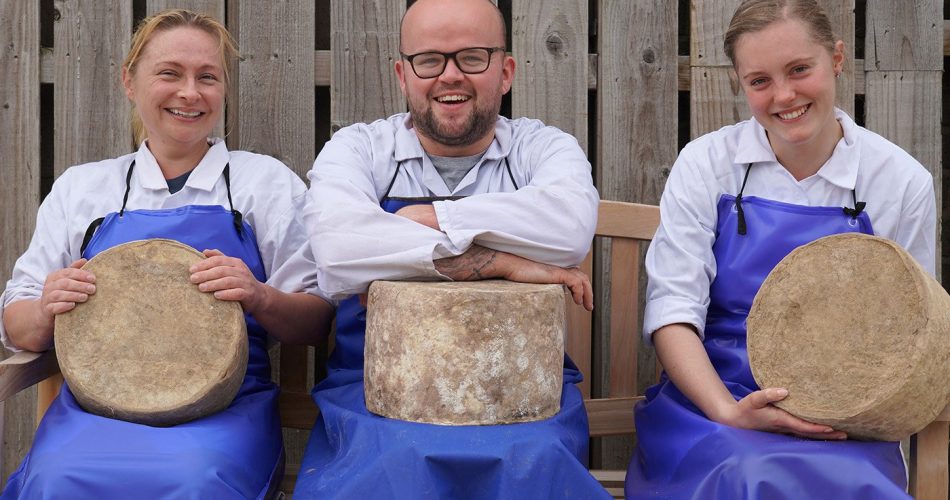Behind the Scenes with Cheese Makers Melbourne: Including Floridia Cheese
Behind the Scenes with Cheese Makers Melbourne: Including Floridia Cheese
Blog Article
Opening the Keys of Artisanal Cheese Making: A Step-by-Step DIY Guide
In the realm of culinary craftsmanship, artisanal cheese making stands as a testament to the fragile equilibrium in between custom and technology. As we get started on this journey to debunk the art of developing exquisite cheeses, we are faced with a tapestry of secrets and skills waiting to be unwinded.
Selecting the Right Milk
When getting started on the journey of artisanal cheese making, the choice of milk plays a crucial role in identifying the high quality and qualities of the final item. The type of milk picked impacts the flavor, texture, and in general profile of celebrity. Raw milk, directly from the animal, is preferred by many artisanal cheesemakers because of its one-of-a-kind mix of enzymes, bacteria, and taste substances. Nevertheless, using raw milk features threats and policies, making pasteurized milk a more secure option for beginners.
Furthermore, the resource of the milk, whether from cows, goats, lamb, or buffalo, adds distinct flavors and characteristics to the cheese. Each type of milk brings its own subtleties, permitting for a wide range of cheese varieties to be crafted based on the selected milk.
Culturing and Coagulating
To initiate the cheese-making process, the vital actions of culturing and coagulating should be very carefully implemented to change milk right into curds and whey. Culturing entails presenting valuable bacteria to the milk, which after that starts the fermentation procedure. These bacteria transform lactose (milk sugar) right into lactic acid, developing the acidic setting essential for coagulation. The sort of society made use of can dramatically impact the flavor, texture, and ripening of the last cheese item.

The timing and temperature level control during culturing and coagulation are critical variables that influence the final outcome of celebrity. Appropriate execution of these actions is important to ensure the wanted structure, taste, and uniformity of the artisanal cheese being produced.
Draining Pipes and Pressing Curds
After the milk healthy proteins have coagulated and the curds have actually been cut to launch whey, the following important action in artisanal cheese making entails draining and pressing the curds to attain the desired appearance and consistency of the final cheese item. Draining is the procedure of separating the curds from the whey. This can be done by moving the curds into a cheesecloth-lined colander or mold and mildew and allowing the whey to drain pipes off normally. The time for draining pipes can vary depending upon the kind of cheese being made and the preferred dampness content.
Once the curds have completely drained, the next action is pressing. Pushing aids expel any continuing to be whey and compacts the curds to form a solid cheese wheel. Pressing can be done making use of specialized cheese presses that apply constant and mild stress over a duration of time. The period and stress used throughout pushing will certainly affect the last texture of the cheese, from velvety and soft to difficult and company. Appropriate draining and pressing are essential steps that substantially influence the top quality and features of the artisanal cheese about his being created.
Aging and Flavoring Techniques
Executing meticulous aging and flavor techniques is pivotal in enhancing the deepness and intricacy of artisanal cheeses, raising their taste accounts to charming degrees of refinement and refinement. Aging plays a critical duty in creating the unique tastes and appearances that identify artisanal cheeses. Throughout the aging procedure, cheeses are stored in thoroughly controlled settings where aspects such as humidity, temperature level, and airflow are manipulated to encourage the development of helpful molds and bacteria. This regulated environment permits the cheese to grow slowly, creating complex aromas and abundant tastes.
Flavoring techniques likewise add significantly to the last preference of artisanal cheeses. Cheesemakers may select to present added flavors by incorporating active ingredients such as herbs, flavors, and even fruits right into celebrity during the production process. Furthermore, some cheeses are cleaned or massaged with various fluids, such as salt water or alcohol, to boost their textures and tastes.
Covering and Saving Cheeses

Verdict
Finally, understanding the art of artisanal cheese making involves meticulously selecting the ideal milk, following exact culturing and coagulating processes, draining pipes and pushing curds efficiently, and making use of various aging and flavoring methods. By adhering to these steps vigilantly and with attention to detail, you can produce your very own tasty and distinct cheeses in your home. Bear in mind to wrap and keep your cheeses effectively to guarantee optimal taste and appearance development. Pleased cheese making!
Each type of milk brings its own nuances, allowing for a wide range of cheese varieties to be crafted based on the chosen milk.After the milk healthy proteins have coagulated and the curds have been cut to release whey, visit site the following crucial step in artisanal cheese making involves draining pipes and pushing the curds to attain the preferred structure and uniformity of the last cheese product. The majority of cheeses must be covered in wax paper or cheese paper to enable them to take a breath while securing them from drying out. For cheeses that need to continue aging, such as bloomy skins or washed rinds, ensure they are saved in a trendy setting like a cheese cave or a fridge set to the suitable temperature. By paying attention to the wrapping and storage of artisanal cheeses, cheese manufacturers and fanatics can protect the integrity of these specials and completely enjoy their complex tastes.
Report this page